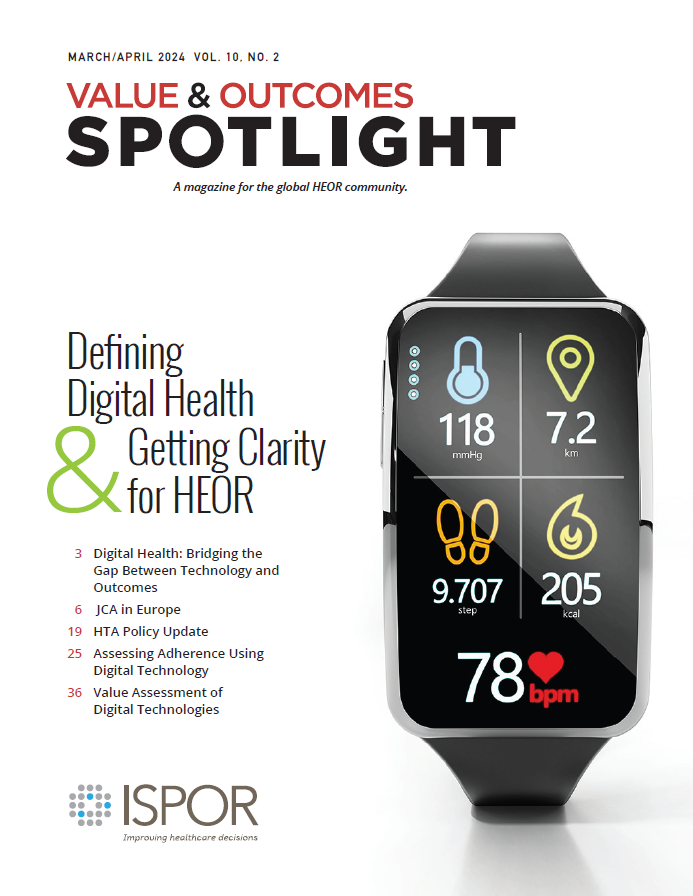Interview With Niklas Hedberg: Chair of the Executive Board, EUnetHTA
Value & Outcomes Spotlight has partnered with PharmaBoardroom to share content that is relevant to the global HEOR community. This interview was originally published on the PharmaBoardroom website in March 2024. For more information and other stories like this, visit PharmaBoardroom.

PharmaBoardroom caught up with Niklas Hedberg at DIA Europe 2024 in Brussels to gauge what more needs to be done ahead of the implementation of European HTA regulation in January 2025. Hedberg, who spoke at a host of panels across the event, also gave his take on the EU Pharma Legislation, the EMA’s orphan drug designation, and general stakeholder awareness and understanding of the HTA/payer perspective.
PharmaBoardroom: When we spoke around this time last year, you highlighted the big challenge for all stakeholders ahead of the implementation of European HTA regulation in January 2025. Nine months out, are all the ducks in a row? What is left to be done for the coordination group, national regulators, pharma companies, etc?
Niklas Hedberg: Yes, the ducks are in a row! Very clearly, there are now a number of formal documents that need to be finalized; basically, the 6 implementing acts. The first one was very recently published for a 4-week review period and 5 more are lined up.
We all realize that we are working to tight deadlines, and the Commission is the one responsible for the implementing acts. From a member state perspective, there are now two groups in the game: the HTAR coordination group and a comitology group, through which the secondary legislation runs.
On the coordination group side, there are 4 subgroups that are working very hard to produce the methodological and practical guidelines for joint clinical assessments and joint scientific consultations. A number of those will also come out quite soon.
I realize that there is an appetite to see what we have actually been doing up to this point, but we are now close to revealing this.
PB: To what extent is participation in events like DIA Europe an important part of sharing news and speaking to stakeholders outside of the HTA/payer bubble?
NH: We need to engage more, explain the system, and clarify the steps that we are taking. While no individual can give overarching statements on what, for example, the coordination group as a whole thinks, engagement and discussion is nevertheless crucial. The HTA Townhall at this conference, bringing together a panel from HTA bodies, the European Commission, patient groups, and industry, is a good example of this.
PB: Yesterday you talked about how every little piece of ink in the EU Pharma Legislation expands by the time it reaches downstream stakeholders like TLV (the Swedish Dental and Pharmaceutical Benefits Agency). Can you run us through some of your key concerns, and some of the ways that the Pharma Package contradicts or butts up against the HTA regulation?
NH: From the perspective of the European HTA Heads of Agencies Group (HAG), there is a clear recognition of the importance of this legislation. In a couple of areas—including defining unmet medical needs and evidence generation—we need to be mindful that the methodology currently being worked out by the coordination group and referred to in the pharma legislation will eventually come close to the HTA legislation. HAG also recognizes the importance of being mindful of timelines; everything relating to timelines of regulatory processes in the pharma legislation will potentially have an impact on the timelines in the HTA regulation. Finally, we need to recognize that we already have good cooperation on joint scientific consultation.
"In a couple of areas—including defining unmet medical needs and evidence generation—we need to be mindful that the methodology currently being worked out by the coordination group and referred to in the pharma legislation will eventually come close to the HTA legislation."
On the national side, TLV—the agency that I represent in Sweden—is partly in line with that. Looking at the 2 legislations, our impression is that the HTA legislation ultimately looks for a better evidence base for HTA decisions. However, we should be mindful that the pushes for accelerated approvals and conditional approvals in the pharma legislation do not necessarily support this move towards a better evidence base.
There is also the issue of exclusivity times, perhaps the most sensitive point for the industry. At TLV, we feel that a ceiling should be considered to maintain affordability, one of the 3 pillars of the Pharma Legislation along with access and availability. We do though, of course, recognize the need to maintain the conditions for innovation in Europe.
Thirdly, we would like to see a reconsideration of the orphan drug definition. We appreciate the need for the orphan drug system. But from a payer perspective, the groups are too big, so we would like a special system with something closer to “ultra-orphan.”
Our last point is that we would like to see a reconsideration of proposal to introduce transferable exclusivity vouchers to encourage R&D investment in antimicrobial resistance. We consider these the least cost-effective incentive method for new antibiotics development out of 3 alternatives, as detailed in a recent report on our website. There is broad alignment with other Swedish agencies on this point, although whether we will be able to garner international alignment remains to be seen.
“Our impression is that the HTA legislation ultimately looks for a better evidence base for HTA decisions. However, we should be mindful that the pushes for accelerated approvals and conditional approvals in the pharma legislation do not necessarily support this move towards a better evidence base.”
PB: You raised the idea that you cannot have 100% “flexibility” and 100% “predictability” in the Pharma Legislation. Is your hope that, for now, we lean more on the side of “flexibility” and build in “predictability” later?
NH: There are so many wishes and wills and demands now. My message is simply to be mindful that 100% predictability means no flexibility and that 100% flexibility means no predictability. They are two sides of the same coin, so we all need to be mindful of where we strike the balance.
PB: At the unmet medical need panel, you said that the PRIME designation was the most interesting thing the European Medicines Agency (EMA) has done in recent times. Can you explain briefly why?
NH: This is my personal view alone: I feel that PRIME, for only the second time ever after the orphan drug regulation, meant that the EMA had to put certain products before others. The whole regulatory system is built on the idea that there are no limits to approval numbers, but PRIME has led to a mindset shift at the EMA. Thinking about prioritization is a game changer and means that they have started to talk our language as payers.
This is not to say that I embrace everything that comes with PRIME, which is quite controversial in some of the HTA circles in which I move. Nevertheless, the prioritization aspect is very important and I am sure that sooner or later it will bring the EMA’s reasoning a little closer to that of HTA bodies.
"The whole regulatory system is built on the idea that there are no limits to approval numbers, but PRIME has led to a mindset shift at the EMA. Thinking about prioritization is a game changer and means that they have started to talk our language as payers."
PB: I got a sense of frustration from you towards legislators, industry, and regulators on some of the panels. Do you think that sober payers’ arguments are better received today than they were 10 or 20 years ago? I am thinking specifically about your insistence of the lack of an infinite money pot and that paying more for game changing innovations might mean paying less for incremental innovations…
NH: I did not want to come out as frustrated but for sure I think we need to be clear that budgets are limited. I think there is a slow but increasing understanding from most parties. The pandemic response, for example, was a good case study of different health values being put up against each other. We had to think about the medical value of isolating and preventing death from infection versus the downsides of loneliness and mental health issues. Then, all of a sudden, we got the vaccines, but in a limited number and had to prioritize which members of society should receive them first. In Sweden, we focused on the elderly and people with the highest risk factors first, with the healthier and younger parts of the population having to wait. Most people found that fair, but it was a prioritization.
Slowly, we had an awakening. I do realize that it is still challenging for a company or a patient group when an agency like ours does not accept a general reimbursement for an individual drug, but from a holistic and system perspective, I think awareness is gradually increasing.

